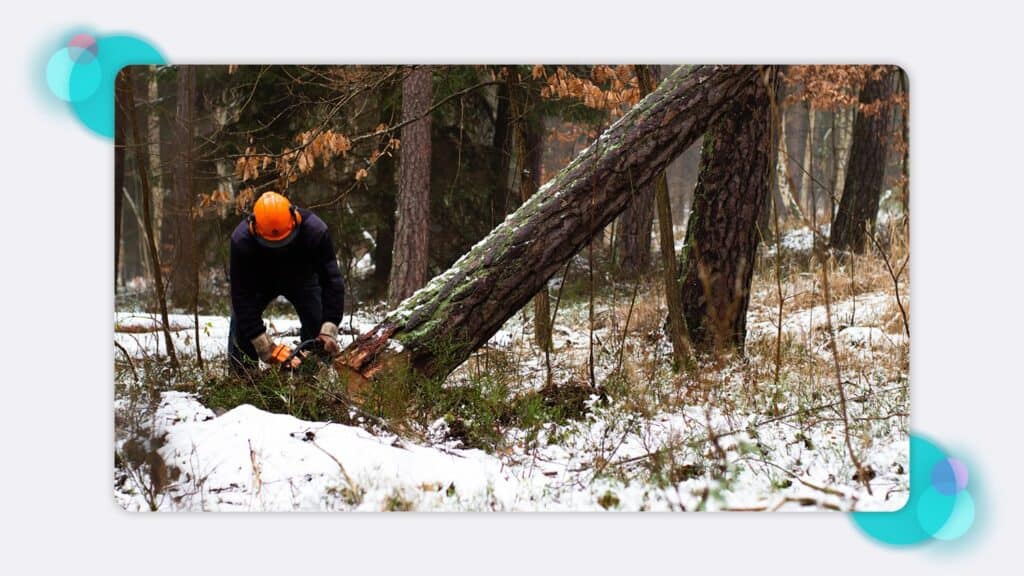
As of 2022, it was estimated that there are 3.24 million hectares of woodland in the UK: 13% of the total land area of the UK. That’s a lot of trees and woodland to manage, prune, protect and fell! Lone workers in forestry can be involved in operating harvesting and felling machinery, they might be timber workers and drivers, or people maintaining and conserving forest grounds.
Protecting lone workers in the forestry sector (whether they are arborists, fellers, or work in an environmental role) is not only important for their safety, but also for the business as a whole.
In this article, we’re going to be largely focusing on those who work in commercial forestry. For more on conservation and environmental roles, see this article.
A lone worker is someone who works out of sight or earshot of their colleagues for some or all of their day. Lone working, by its nature, can increase the risk of serious injury, by lowering levels of oversight and increasing response times to potential emergencies.
In simple terms, if a tree feller was knocked unconscious by a falling branch, it might take their team a long time to realise they are unaccounted for, let alone find them.
In the same way that the risk of blunt force injury is reduced by wearing a hard hat, the risk of an injury going unnoticed is reduced by lone worker policies.
Forestry is regarded as a high-risk profession. While the Health and Safety Executive doesn’t provide specific information on forestry work, ‘Agriculture, Forestry and Fishing’ (as it is categorised) has the highest rate of workplace deaths in any sector.
The rate of fatal injury in this sector is eighteen times as high as the average rate across all industries. The rate of non-fatal injury is also higher in this sector than in any other.
Again, while these rates are taken from the entirety of the wider ‘agricultural’ sector, causes of injury are similar for forestry as they are for farming (injury from vehicles or machinery, falling from a height, being hit by a falling object, trips and falls, etc.)
Some obvious risks to forestry workers include the use of chainsaws and other tools, the use of vehicles and large machinery and dangers from the actual trees and landscape. What may not be as obvious is how these factors can be made worse by lone working.
If a forestry worker were to be injured while working on their own, their team may not be able to help them, or even know that they were injured. In particularly remote locations, an injured worker may be hard to find, and may not be able to get the help they need.
Risks can include:
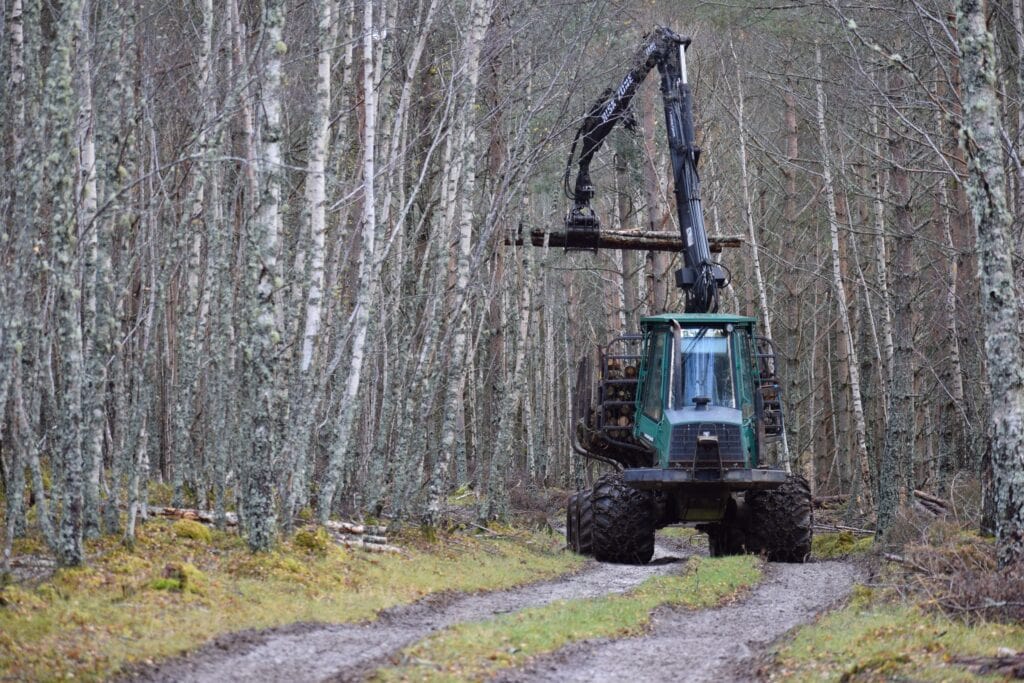
While better equipment and working practices have led to lower rates of injury in the forestry sector over time, we believe that more can be done –particularly around lone working.
There may be some tasks in the forestry profession that should never be tackled alone, for others ‘lone working’ may be entirely reasonable, but will come with further legislative responsibilities.
According to the UK government, employers have a responsibility to provide lone workers with ‘adequate and reliable means of communication and a way to call for help’ which may include ‘devices designed to raise the alarm in an emergency which can be operated manually or automatically’.
With forestry having so many elements of risk, and being relatively difficult to supervise, these responsibilities become even greater.
For more information on this subject, head to our complete guide on lone working.
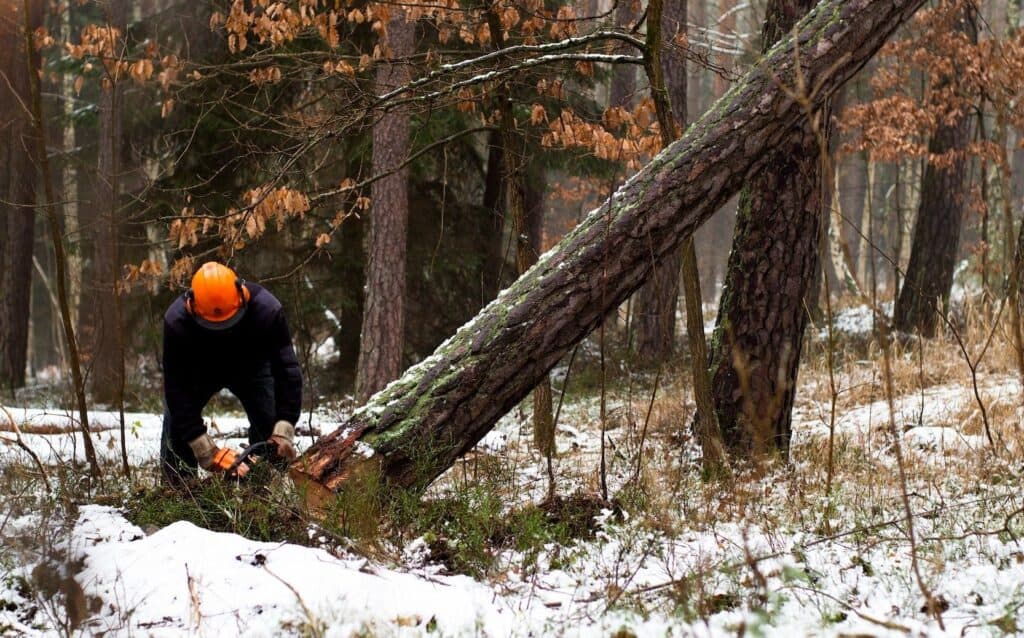
When considering how to protect your lone working forestry workers, there are a number of preparations you should consider:
All sorts of businesses rely on Safepoint’s lone worker solutions and 24/7 Alarm Receiving Centre to keep their staff protected and organised. Some forestry and environmental organisations that use Safepoint include:



Safepoint provides award-winning lone working solutions for workers in the forestry sector along many other industries across the UK and abroad.
When forestry workers equipped with Safepoint’s apps and wearable panic alarms, they can set up timed, GPS-tracked ‘tasks’ (such as ‘Visiting Norfolk Site – 3 hrs’).
If the worker runs into trouble, they can tap a button on their phone or wearable panic alarm and an alert will be sent out (along with their live location).
But what if a worker is incapacitated (for instance, is knocked out by a falling branch)? With Safepoint, an alert will also automatically be sent out if a user takes a fall (sometimes called a man-down feature) or is unresponsive.
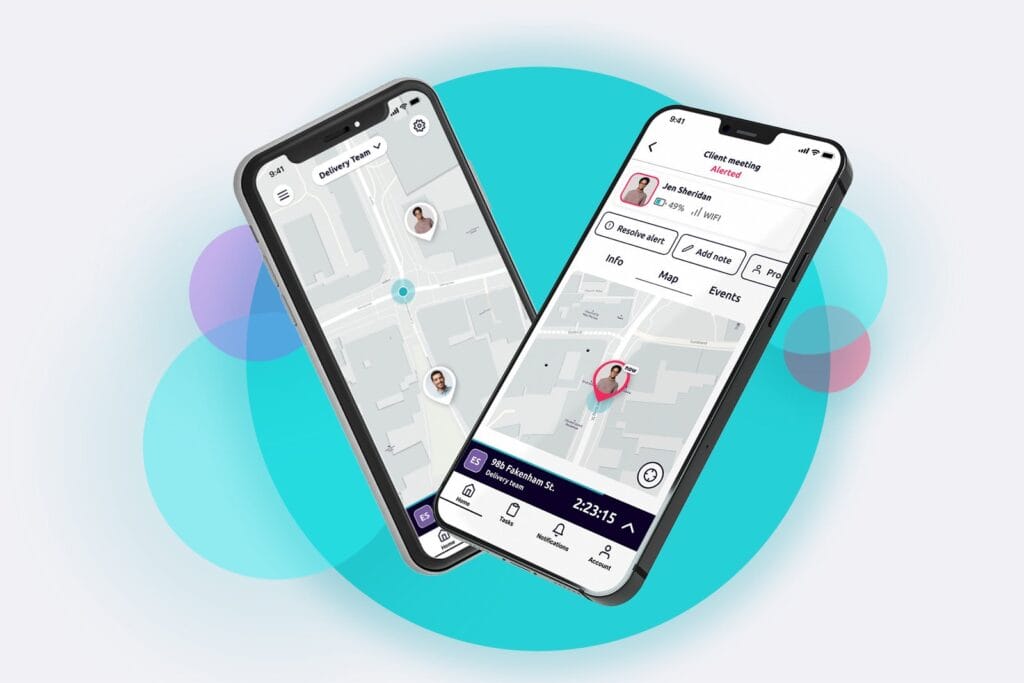
With Safepoint, forestry organisations can supervise their whole team through the Safepoint Portal – where they can see alerts, live locations, status updates, team analytics and more. They can even see a what3words location for their staff –perfect when workers are miles away from a traditional address.
What’s more, with Safepoint’s 24/7 GuardianPlus service, your team’s safety can be monitored day and night by an accredited team of expert responders. These emergency response professionals, working out of a dedicated Alarm Receiving Centre, will handle any emergency –from first response to escalation management, to liaising with the emergency services.
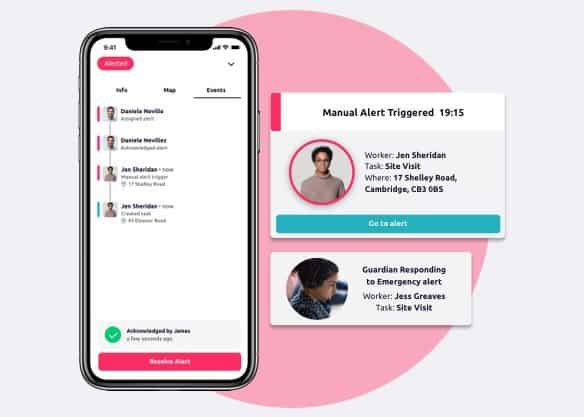
Award-winning safety management tools and a fully accredited response team.